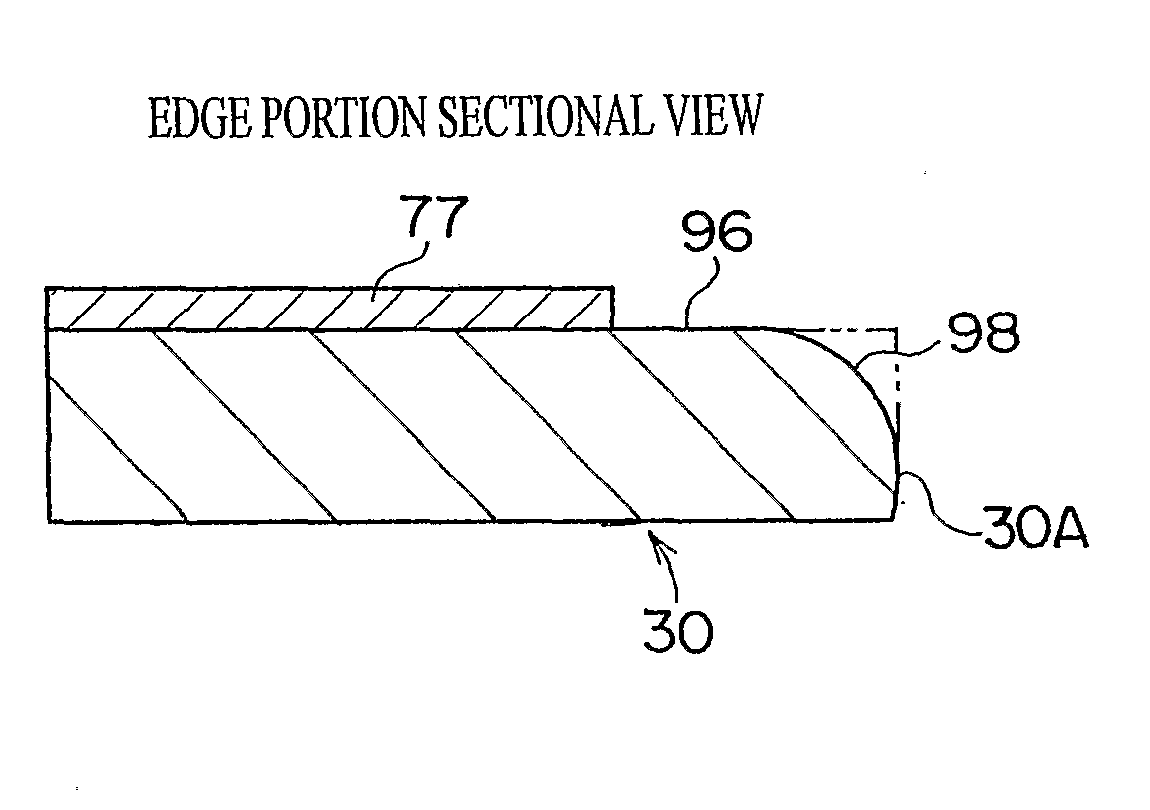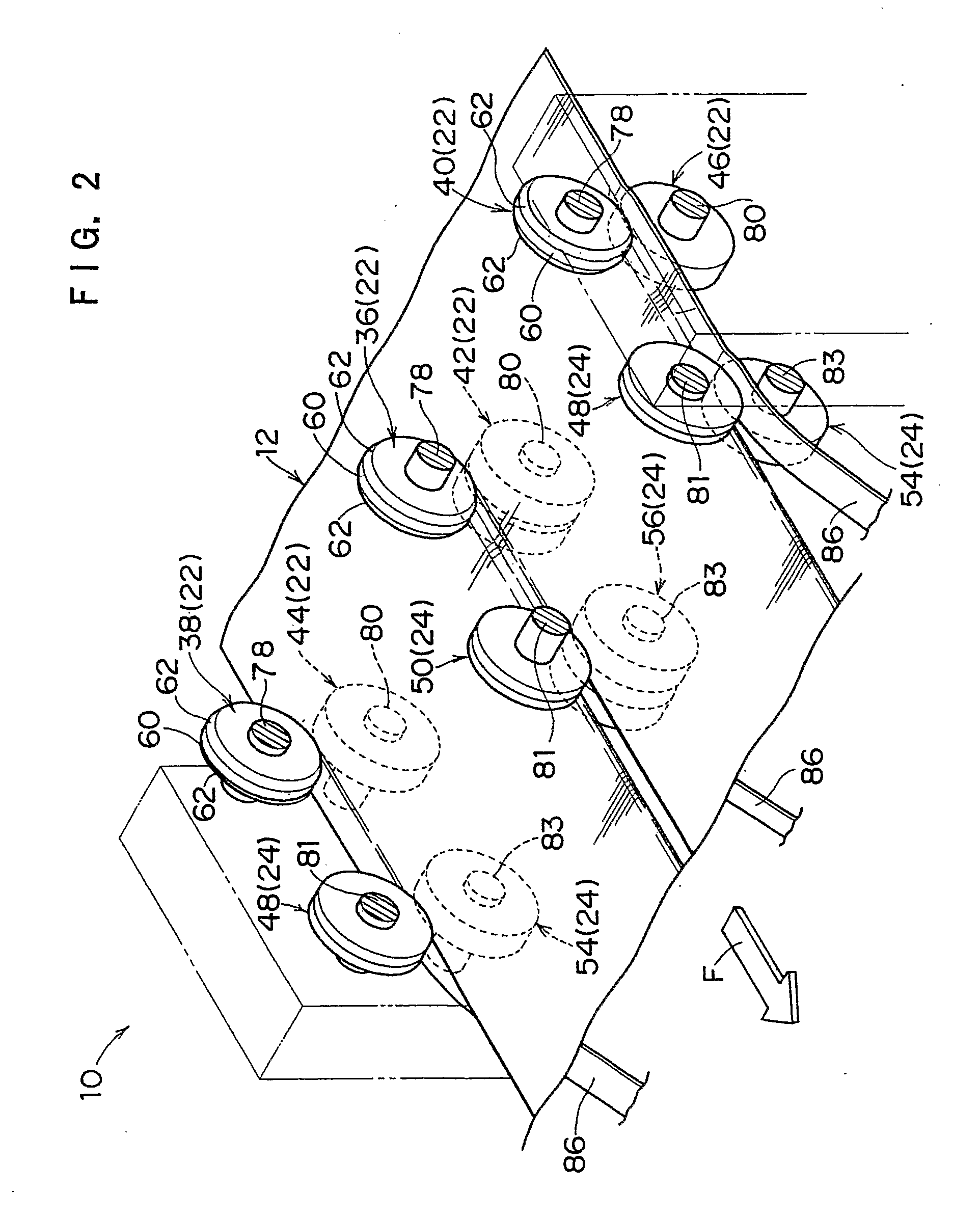Photosensitive planographic printing plate and fabrication process thereof
- Summary
- Abstract
- Description
- Claims
- Application Information
AI Technical Summary
Benefits of technology
Problems solved by technology
Method used
Image
Examples
Example
[0168]The results were that, in the comparative example, because clearance slitting was employed, edge soiling did not occur but cut-out losses were generated, while in conditions (1) to (6), even though Goebel slitting systems were employed, edge soiling did not occur.
[0169]That is, from these test results, it is seen that cut-out losses can be eliminated by combining the coating removal processing of the present invention with a chamfering process. When shape control is performed before or after cleaving, it is possible to obtain a particular chamfered shape regardless of the system of cleaving. Therefore, it is not necessary to combine a pair of blades at a central portion as shown in FIG. 4, and cut-out losses can be eliminated. Furthermore, because crack fogging is eliminated by the coating removal, it is possible to improve quality with regard to edge soiling even though the coating removal is combined with clearance slitting.
[0170]Further yet because the edge portions of the ...
PUM
 Login to View More
Login to View More Abstract
Description
Claims
Application Information
 Login to View More
Login to View More - R&D
- Intellectual Property
- Life Sciences
- Materials
- Tech Scout
- Unparalleled Data Quality
- Higher Quality Content
- 60% Fewer Hallucinations
Browse by: Latest US Patents, China's latest patents, Technical Efficacy Thesaurus, Application Domain, Technology Topic, Popular Technical Reports.
© 2025 PatSnap. All rights reserved.Legal|Privacy policy|Modern Slavery Act Transparency Statement|Sitemap|About US| Contact US: help@patsnap.com



